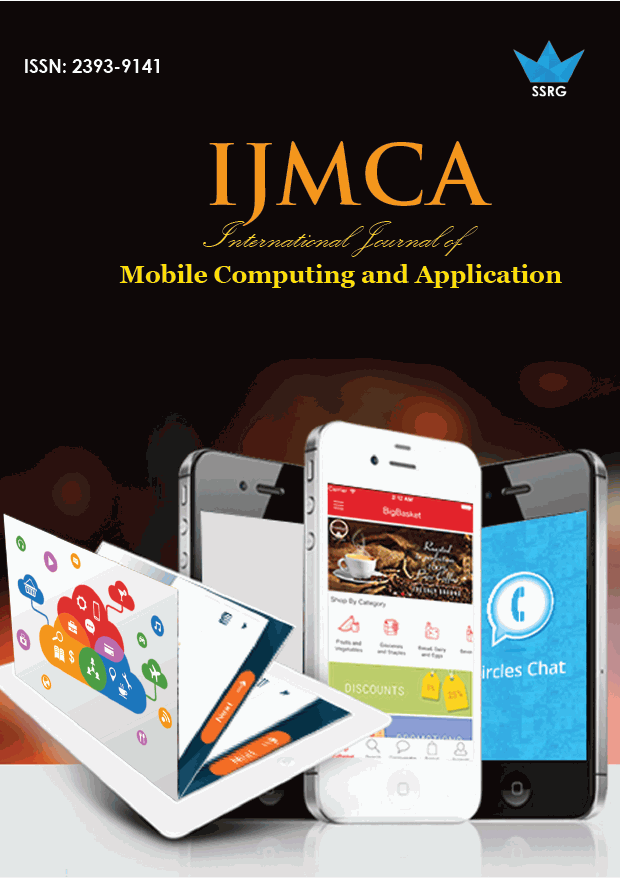Collaborative System for Scheduling the Cloud Services in MVM

| International Journal of Mobile Computing and Application |
| © 2015 by SSRG - IJMCA Journal |
| Volume 2 Issue 1 |
| Year of Publication : 2015 |
| Authors : S.Sarathkumar, C.Vinoth |
How to Cite?
S.Sarathkumar, C.Vinoth, "Collaborative System for Scheduling the Cloud Services in MVM," SSRG International Journal of Mobile Computing and Application, vol. 2, no. 1, pp. 13-16, 2015. Crossref, https://doi.org/10.14445/23939141/IJMCA-V2I2P102
Abstract:
Data mining technique has become interesting because of identifying patterns and trends from large collections of data. It is known that the collection and analysis of data that includes personal information of an individual may violate privacy of to whom the information refers. After obtaining this data pattern it is shared among various organizations to improve its services. While sharing the information among the organizations, it may be misused. To overcome this, Access Control Mechanism is used to protect sensitive information from unauthorized user. But still privacy preserving mechanisms is not applied to ensure the privacy of shared information. To ensure the privacy, Top-Down heuristic is applied with kd -tree partitioning. This approach is limited only to static data release not for incremental data. That is it is assumed that a whole dataset is available at the time of data release. To address this issue anonymization approach with generalization and range tree partitioning is applied on incremental data which can enhance security and privacy policies.
Keywords:
Access Control, Privacy, Mondrian, Imprecision Bound.
References:
[1] K. Browder and M. Davidson (2002) ‘The virtual private database in oracle9ir2’, Oracle Technical White Paper, Oracle Corporation, vol. 500.
[2] S. Rizvi, A. Mendelzon, S. Sudarshan, and P. Roy (2004) ‘Extending query rewriting techniques for fine-grained access control’, Proceedings of the 2004 ACM SIGMOD international conference on Management of data, pp. 551–562, ACM.
[3] D. Ferraiolo, R. Sandhu, S. Gavrila, D. Kuhn, and R. Chandramouli (2001) ‘Proposed NIST standard for role-based access control’, ACM Transactions on Information and System Security, vol. 4, no. 3, pp. 224–274.
[4] P. Samarati (2001) ‘Protecting respondents’ identities in micro data release’, IEEE Transactions on Knowledge and Data Engineering, pp. 1010–1027.
[5] K. LeFevre, D. DeWitt, and R. Ramakrishnan (2006) ‘Mondrian multidimensional k-anonymity’, in Proceedings of the 22nd International Conference on Data Engineering, pp. 25-25, IEEE.
[6] Mark de Berg, Otfried Cheong, Marc van Kreveld, and Mark Overmars (2008) ‘Computational Geometry Algorithms and Applications’, Springer-Verlag Berlin Heidelberg, vol. 3, pp. 95-115.
[7] ZahidPervaiz, Walid G. Aref,ArifGhafoor , and NagabhushanaPrabhu (2012) ‘Privacy-preserving Access Control’,CERIAS Tech Report.
[8] ZahidPervaiz, Walid G. Aref, ArifGhafoor, NagabhushanaPrabhu (2013), ‘Accuracy-Constrained Privacy-Preserving Access Control Mechanism for Relational Data’, IEEE Transactions on Knowledge and Data Engineering, Issue 99.
[9] Ji-Won Byun, Tiancheng Li, Elisa Bertino, Ninghui Li, YonglakSohn (2009) ‘Privacy preserving incremental data dissemination’, Journal of Computer Security, vol. 17, pp. 43-68.
[10] A. Frank and A. Asuncion(2010) ‘UCI Machine Learning Repository’ http://archive.ics.uci.edu/ml/datasets/Census-Income+(KDD).

 10.14445/23939141/IJMCA-V2I2P102
10.14445/23939141/IJMCA-V2I2P102